| The 13th
was a Sunday and I started off my photography in the early afternoon
with a visit to my favorite flower bed. There wasn't too much interesting
going on there, except for a lone bee collecting pollen from some
yellow flowers. The poor bee seemed to have more of it on his head
than in his pollen sacs. |
|
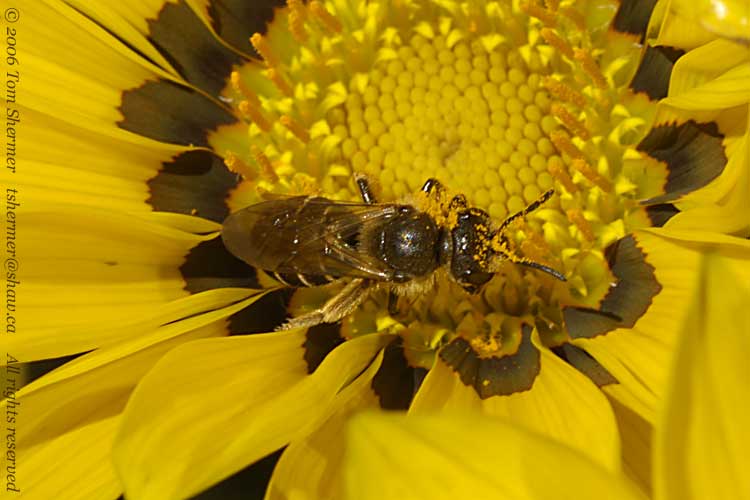 |
|
It's a good thing that
bees don't get pollen allergies. They might have a hard time finding
their way back to the hive if their eyes got all puffed up.
I also just took some
shots of the flowers; there was one whose petals had all curled
up, giving it a starlike shape.
|
|
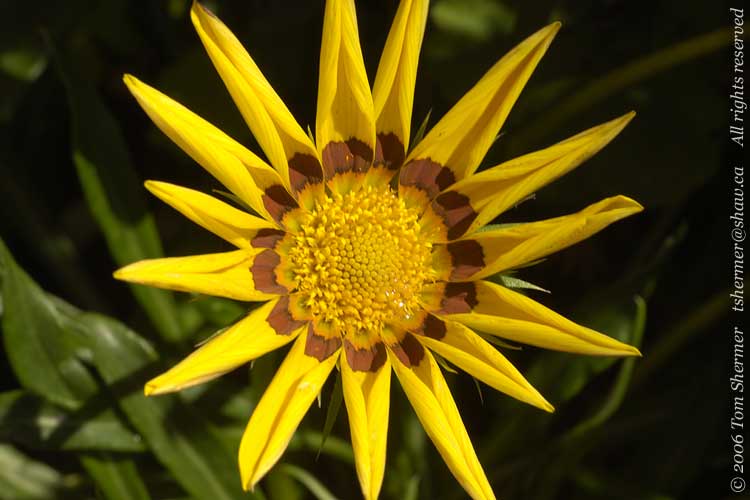 |
|
Since the day was beautiful,
I decided on going out to a park for a walk and some photos. I
chose Colony Farm Park, as I hadn't been there in a while.
Driving in to Colony
Farm, I stopped about forty meters down the entrance road when
I saw a bunch of swallows on the wires. The top fellow here is
a Northern Rough-winged Swallow, and the two bottom ones are Barn
Swallows.
|
|
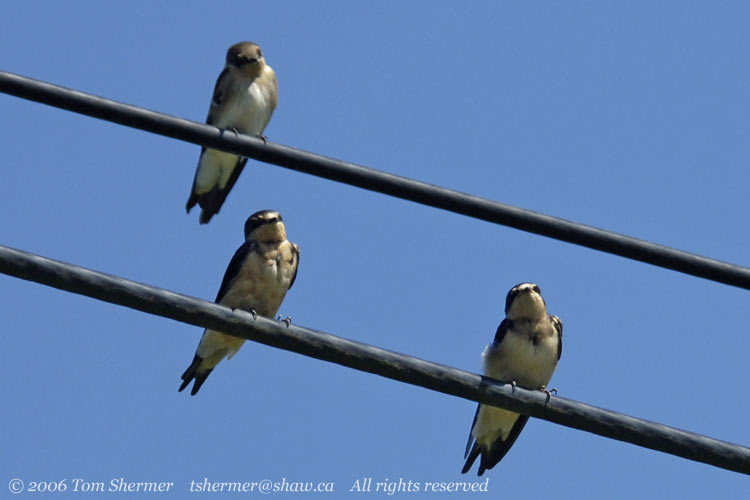 |
| I headed
the rest of the way down the road to the parking lot, and started
out on towards Sheep Paddocks Path, which leads vaguely north, sticking
to the west side of the river. As I got up to where I could see
the bridge across the river, a pair of circling raptors caught my
attention. Their white-and-black underwing pattern quickly told
me they were Turkey Vultures. |
|
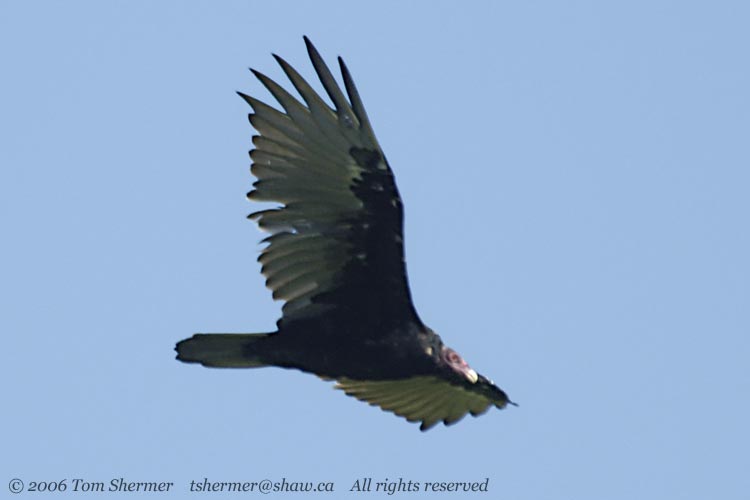 |
|
Vultures aren't common
in this area, which is surrounded by suburbs, so that was a neat
sighting.
I walked along without
seeing much until the path bent a little westward; near the bend
there was an Eastern Kingbird in the trees on my right.
|
|
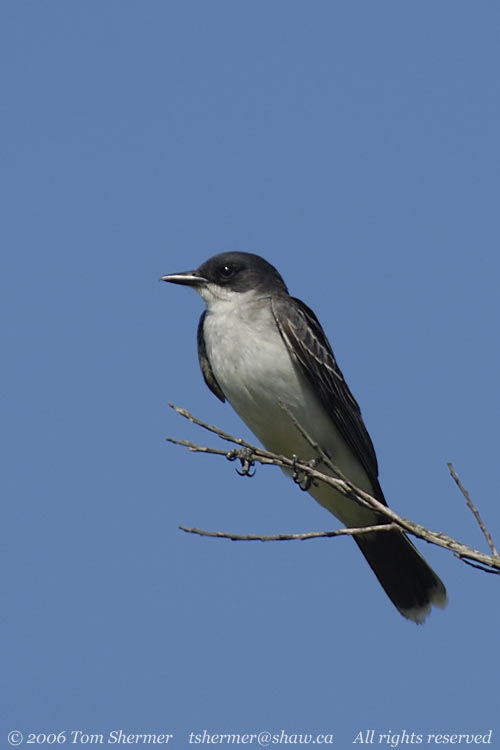 |
| He was doing
a little flycatchng—making short flights to grab insects that
come nearby. |
|
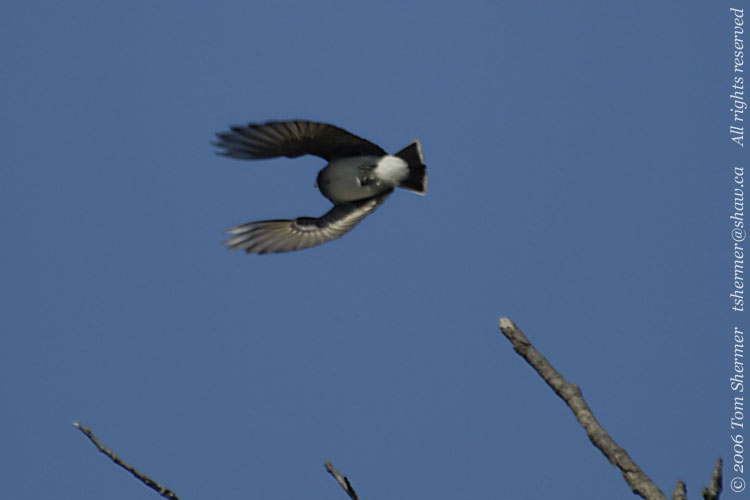 |
| In fact,
the Eastern Kingbird is a type of flycatcher, which means that it
is in a family of birds (the family Tyrannidae, or Tyrant
Flycatchers) noted for this very habit. Many of the birds in Tyrannidae
have "flycatcher" in their common name, such as this Willow
Flycatcher who was hanging out nearby. |
|
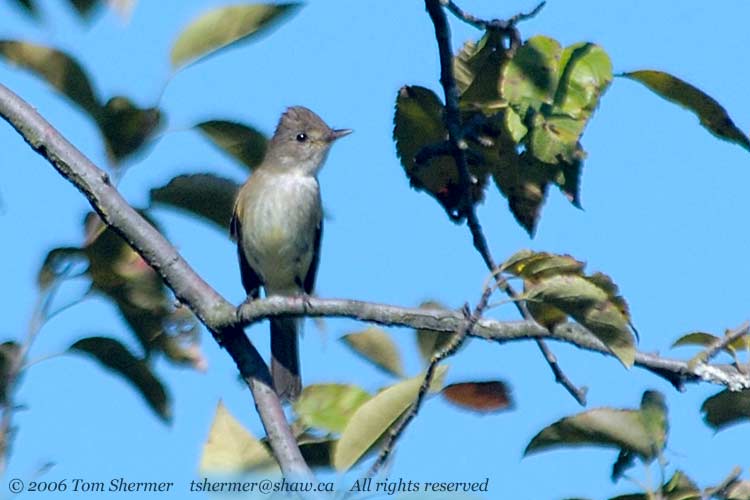 |
| Eventually
I reached the part of the trail where it enters the woods. Just
a few meters in, I heard the call of a Swainson's Thrush. I looked
around and soon found the bird on a tree on the left side of the
trail. This was good luck, as I often hear these thrushes but are
unable to locate them; their perches are often much better concealed. |
|
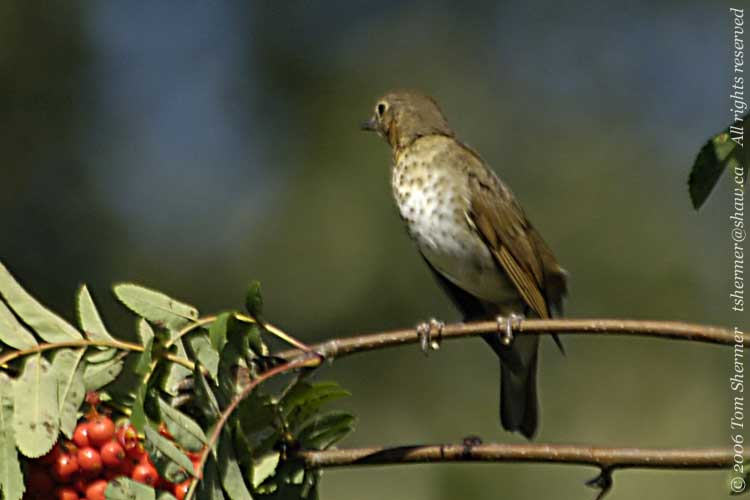 |
|
I only went another
hundred meters or so along the trail, because the surrounding
area becomes dark moderately-dense woods, which are good for neither
finding birds nor non-flash photography.
On my way back, I found
a red-eyed fly on an interestingly-colored fallen leaf. I took
some shots of it even though I was using my telephoto rather than
macro lens, and knew that I wouldn't end up with much detail on
the photo. The telephoto just doesn't usually produce sharp results
for small subjects.
|
|
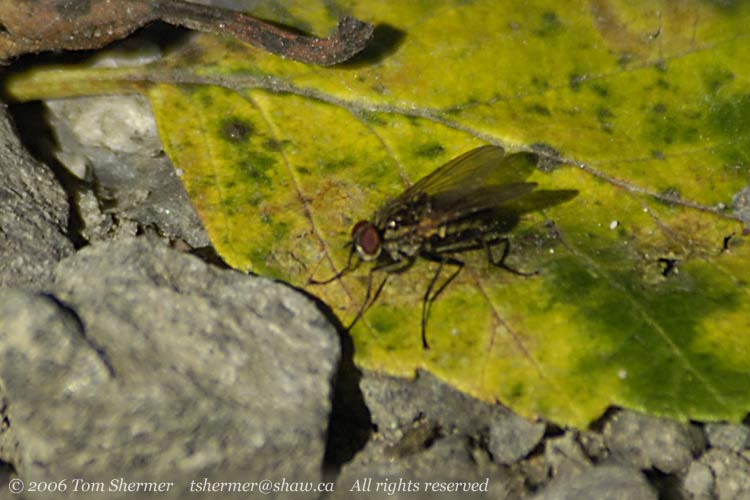 |
| Back on
the open, sunlit part of the trail, I found a few hairy orange caterpillars
and decided to take photos of one. This is with the telephoto lens. |
|
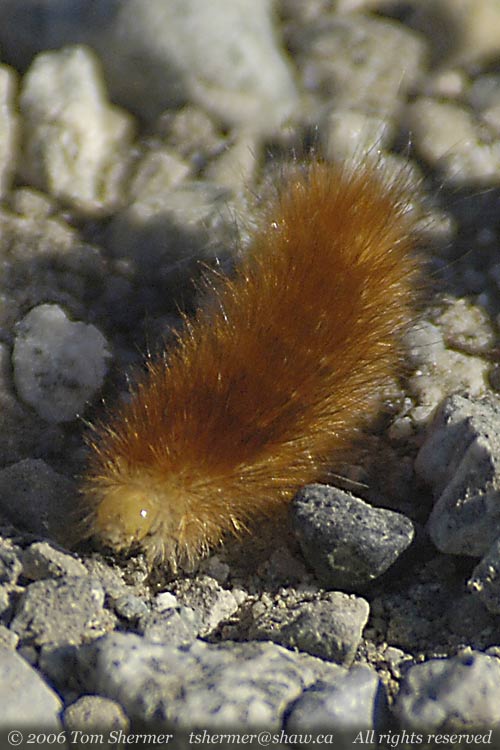 |
|
For the next shot,
though, I sat down, took off my backpack, and put my macro lens
on the camera. By the time I got back to the caterpillar, he had
made it across the gravel and into the grass. I didn't want to
move him, so I flattened some grass to his side and took shots
from there.
The macro lens was
the right tool for the job, and here you can see a lot more detail
on the little guy. I particularly liked the way the hairs grow
in rows across the caterpillar's body; the rows almost seem to
spiral.
|
|
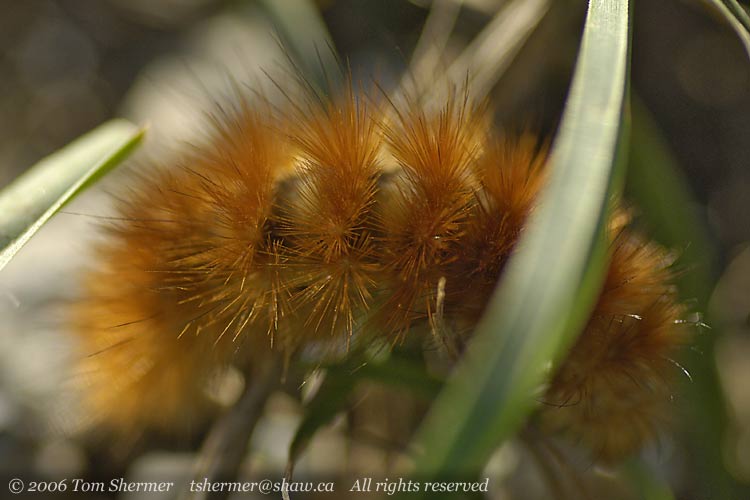 |
| Between
the caterpillar crossing and the bridge across the river, I found
a few more common birds, like this Purple Finch, |
|
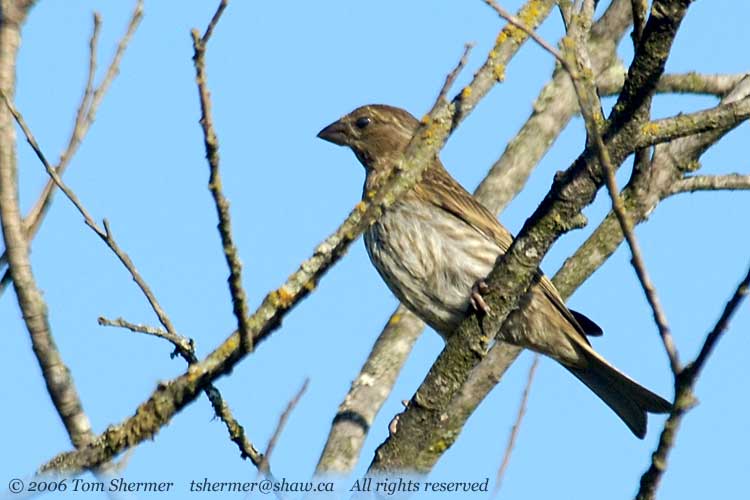 |
| this colorful
Rock Dove, |
|
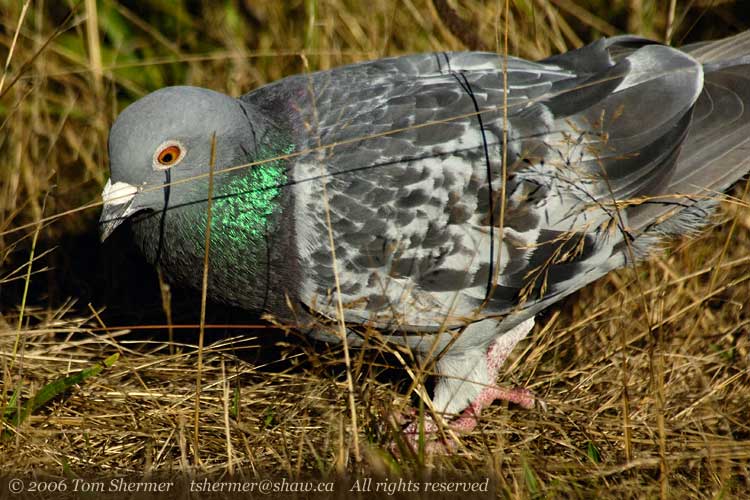 |
| and this
handsome Cedar Waxwing. |
|
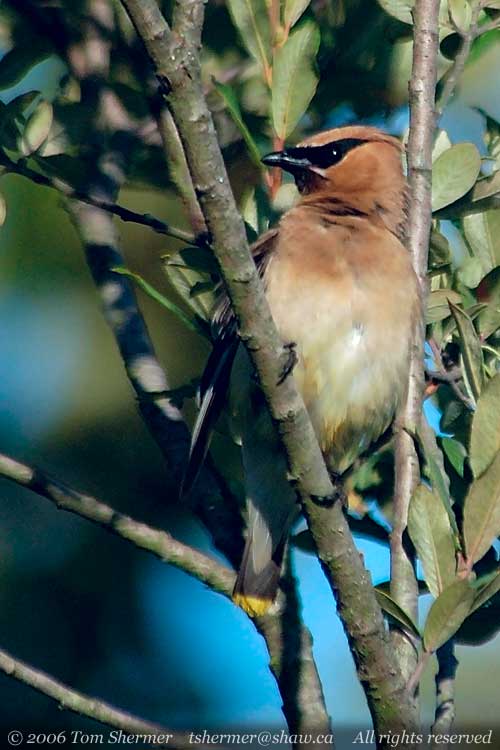 |
|
Reaching the big bridge,
I opted to stay on the dyke for the rest of the walk; this path
eventually spills out onto a road by the Kwikwetkem First Nation
lands; the other route (which I took on my way in) goes off the
dyke and across a small aluminum bridge, staying in the park the
entire way.
Just when I had gotten
to the native lands, my vulture friends reappeared.
|
|
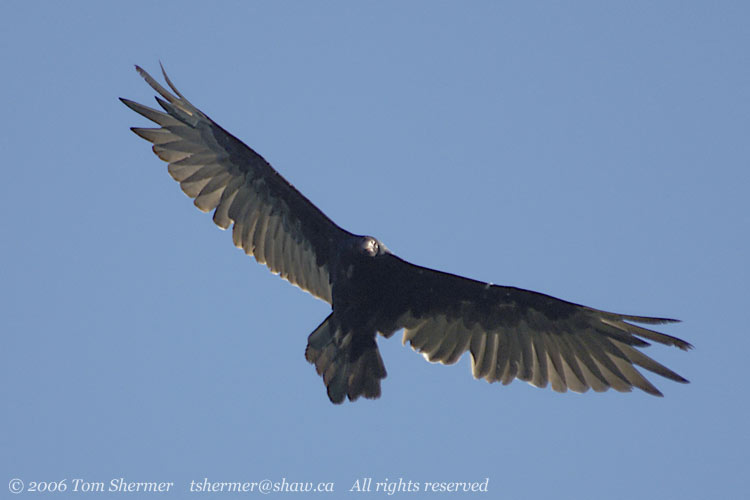 |
| They were
circling quite low, almost right above me. I thought that one of
'em even gave me the eye. |
|
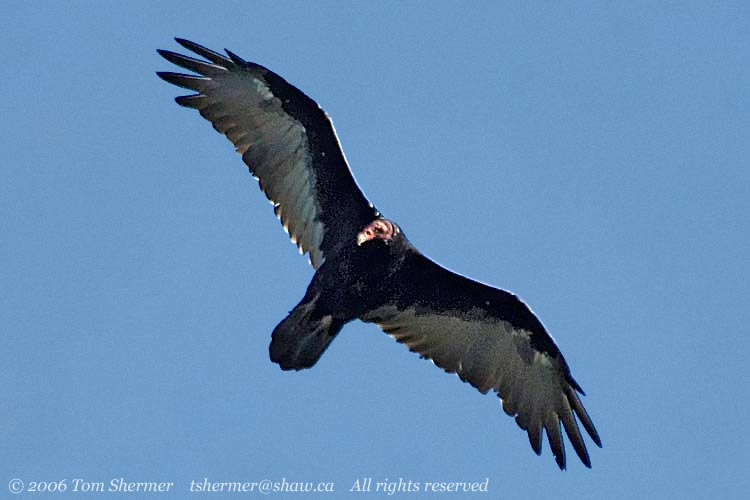 |
|
That got me a little
worried, so I checked to see if I was about to expire or something...maybe
that vulture knew something I didn't. Happily, though, I seemed
in good health, so maybe he was just looking at the odd creature
with the camera rather than thinking about dinner.
The pair circled in
the area for four or five minutes before drifting off to the east.
|
|
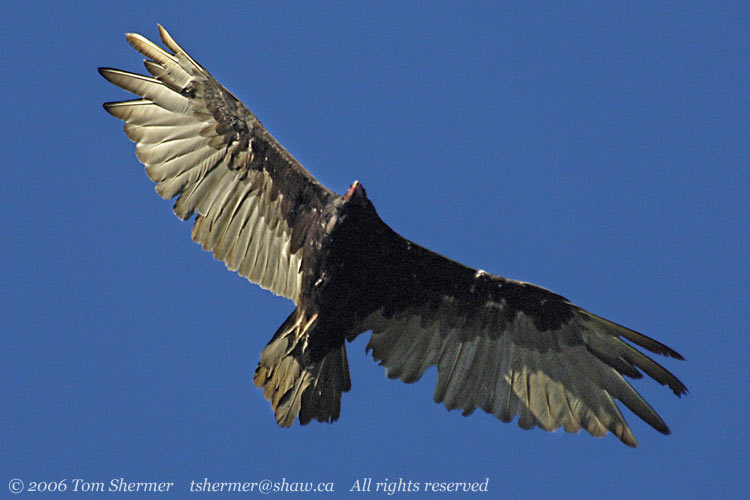 |
|
On my way back out
the entrance road, I again spotted swallows on the wire. This
time, though, the swallows seemed a bit unusual, so I took a bunch
of photos. I wasn't sure of the i.d.'s on some of these, so I
got my friend Ilya to help me out with them.
This photo shows two
Barn Swallows, with the left one being a juvenile.
|
|
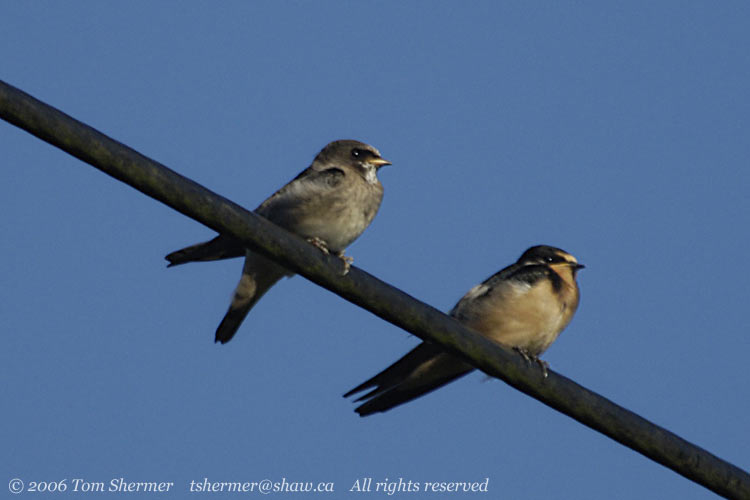 |
|
Here's a shot of just
the juvenile; I'd never seen a bird with this sort of mottling
on the face before. I also wasn't able to find this plumage pattern
in any of my guide books, so I counted myself lucky that I have
friends who know their birds.
|
|
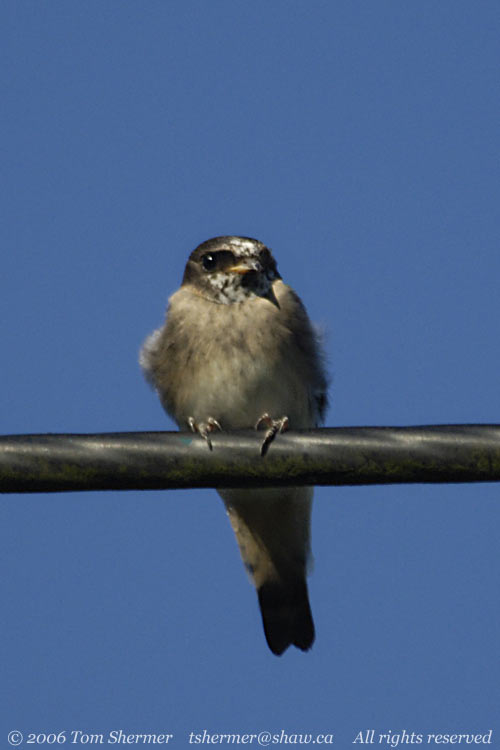 |
| The following
is another juvenile Barn Swallow, which Ilya says is even younger,
or less further along in molt, than the one above. |
|
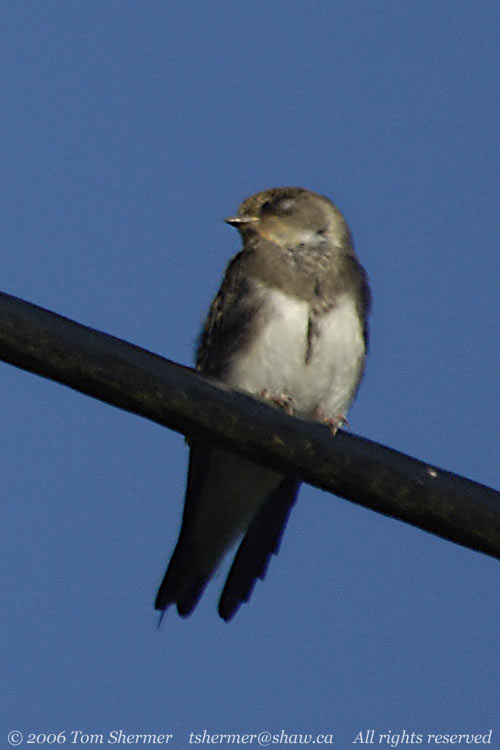 |
| However,
this much more bronzy swallow with dark around the eyes is a Northern
Rough-winged. |
|
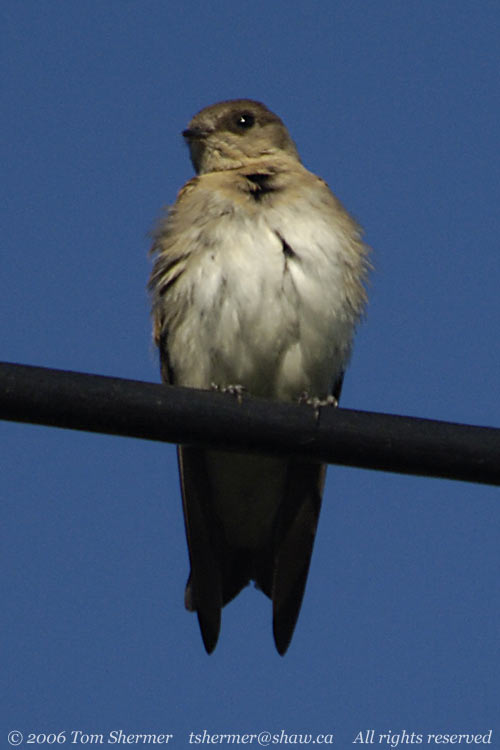 |
| And my last
photo from the park is of a pair of Barn Swallows, illustrating
just how odd bird necks can be. |
|
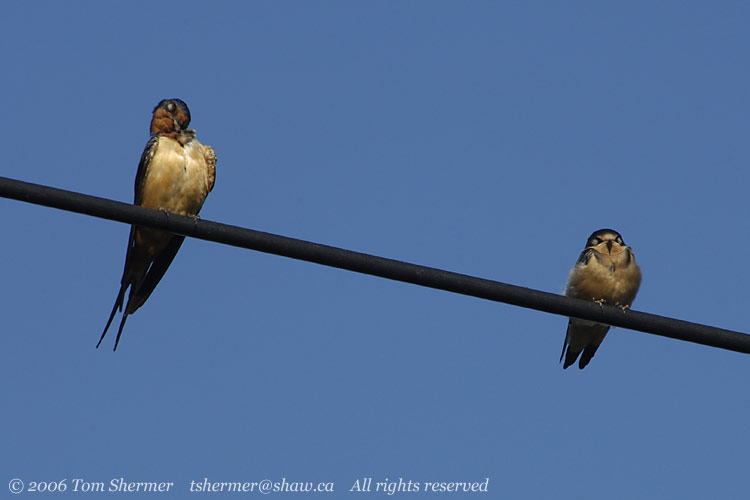 |
| My walk
in the park had gotten me fairly tired, but when I got home, I stopped
to chat for a while with my neighbor Jodi, who was in the courtyard.
As we were talking, she noticed that Patty, one of her cats, was
out in the garden by the river. Patty doesn't get out of the house
too often, at least not when I'm around, so even though she was
at a great distance, I took a few shots of her. |
|
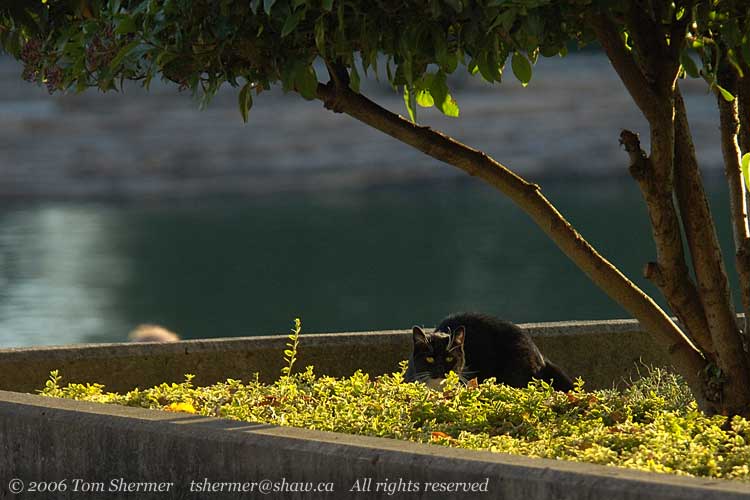 |
|
Right after I took
that photo, she jumped up and went zooming back towards her patio,
leaving Jodi remarking about how crazy her kitties were. Patty
was my last subject that day.
At least as crazy as
Patty,
Tom
|
|